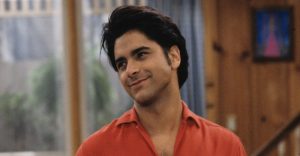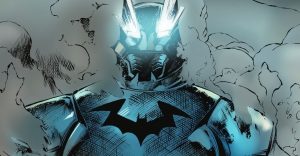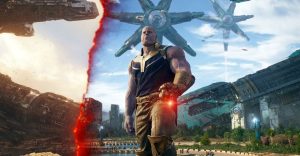Thor’s Darkest Secret Is the Son He Erased From Existence

The Mighty Thor, the God of Thunder, once had a son with the Enchantress. If readers do not remember Magni, it could be because his father erased him from existence, together with a whole timeline where he ruled over Earth as a tyrant.
From the late ’90s to the mid-2000s, Thor was written by comics superstar Dan Jurgens, who carried the character between two of the most important events in Marvel’s history: Heroes Reborn and Avengers Disassembled. Jurgens solidified the Thor mythos during a tumultuous time and added his own elements of innovation, such as making Thor the All-Father of Asgard, the same thing that happened at the end of the War of the Realms, twenty years later. The most innovative, and controversial, storyline of the Jurgens era, however, is The Reigning, in which Thor and the Asgardians take over Earth. After moving Asgard to the skies above New York to inspire mortals with its grandeur, Thor triggers a conflict with the governments of Earth, which ends with the Asgardians conquering the planet, after killing most of its superheroes. Two hundred years in the future, Thor rules as a despot and is no longer worthy of Mjolnir (another story element that would be reprised many years later by Jason Aaron), after killing his human counterpart Jake Olson, symbolically cutting his ties with humanity.
In the early 2000s, superhero comics often addressed the issue of what impact the presence of superpowered beings would have on the real world and its political systems. The Authority came out in 1999 for Wildstorm, while Marvel published the first issue of The Ultimates in 2002, two series that would set the tone of the medium for more than a decade. The Reigning tried to do the same with Thor, as the God of Thunder’s actions in that saga are motivated by a desire to do more than simply protect mortals, but actually force them to be “better.” In this remade Earth, there is no more famine or disease, no borders or religion. There is no need to work, and Asgard’s magic provides infinite clean energy for the whole planet. However, deprived of their struggle for survival, humans are languishing and decadent. A few also plan to rise up against their divine benefactors, in order to regain their freedom.

In this dystopic future, Thor marries his longtime foe Amora the Enchantress, and they have a son called Magni, God of Strength. However, a rebellion brews against the Asgardians’ ruthless rule, and Magni ends up supporting it after seeing how badly the Asgardians are actually treating the humans. He challenges his father to lift up Mjolnir, proving he is no longer worthy and leading Thor to question his own actions. After seeing the error of his ways, Thor uses the Odinforce to go back in time, erasing that whole timeline and making sure the Asgardians never take over Earth. In doing so, however, he also cancels his son from existence, because he will never marry Amora nor conceive him. This is the price to pay for his terrible mistakes.
After that story came Ragnarok, and the whole history of Asgard was reset as the gods died and were reborn. The dark future shown in The Reigning was never mentioned again in Thor comics, and neither was his son Magni. This could be because Marvel does not consider that storyline canon (in fact, that timeline is now classified as Earth-3515), however, it would be a shame if that was the case. The Reigning offered an intelligent consideration on what it means to be a god among mortals, a theme shared by many superhero comics of that time, and also introduced many elements that would be reprised in later storylines. It will be interesting if, in the future, Thor has to face his darkest secret and his greatest sin, Magni, the son he erased from existence.
About The Author

















